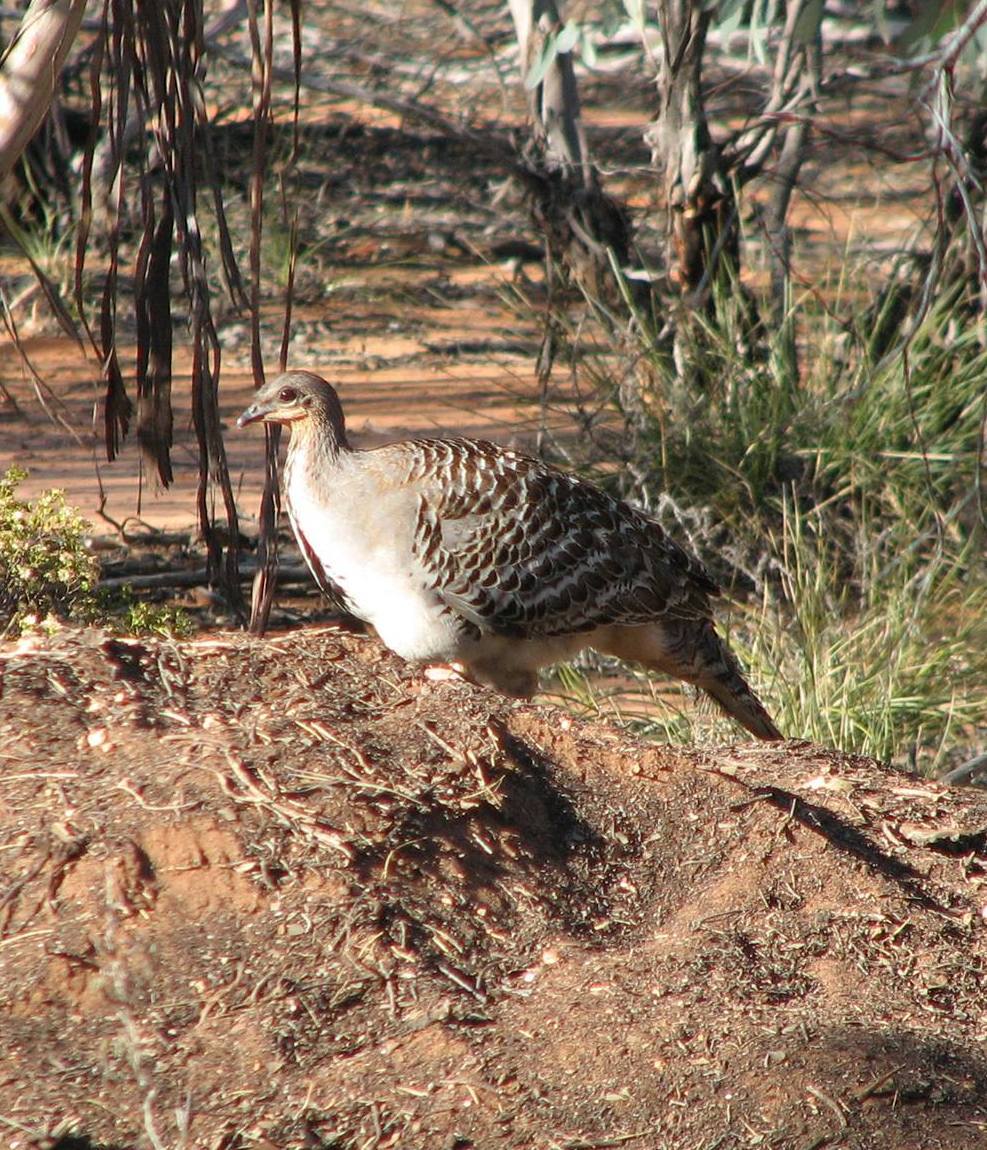By Mick Webster
Since retiring I’ve participated in many ‘citizen science’ programs all over the world – the best-organised and most satisfying to me has been the Victorian Malleefowl Recovery Program (VMRP).
The Malleefowl is an amazing bird that inhabits our semi-arid scrublands from north-west Victoria and western NSW to the Indian Ocean in Western Australia.
A male bird spends winter constructing a mound of leaf-litter and soil up to six metres across and a metre high, in which his ‘wife’ will lay up to 30 eggs during the following summer. As the eggs incubate deep below the surface, the male adjusts the temperature by opening or closing the mound, even covering it in sticks to drain off any rain. The chicks hatch one by one, and take many hours to fight their way to the surface – once there they roll down the slope and scurry off into the bush – no parental after-care!
Unfortunately, Malleefowl numbers are slowly declining, and that’s why the VMRG (with other states copying us) was set up more than 30 years ago, to monitor numbers of ‘active’ nests from year to year, and also to study possible causes of this decline.
Every October up to 150 eager people meet at Wyperfeld National Park for a ‘training weekend’, to learn or refresh our memories about our tasks during the next six months.
Groups are assigned to visit ‘sites’ all over the Mallee and Wimmera, each one having up to 130 nests – each group visits their site and nests in any order, with a set protocol at each one – active/not active?, shape, dimensions, tracks and scats (we collect all fox poo!), feathers (collected), photo for comparison to last year.
It’s a random bushwalk with occasional excitement of finding an active nest, maybe with a bird actually working away!
We all meet again at ‘reporting weekend’ in April, when we learn the results for the year – sadly numbers of active nests have declined from more than 200 in 2012 to only 99 last year (out of over 1300 visited).
Are birds not breeding, or are numbers really down? What’s the effect of fox and cat predation, and competition for food from roos, and feral herbivores? So much more research is needed!
And we also need more volunteers. It’s an amazingly well-run program and lots of fun and good exercise! Contact Mick Webster at websterm@netc.net.au, or search for Victorian Malleefowl Recovery Program on Facebook for more information.

